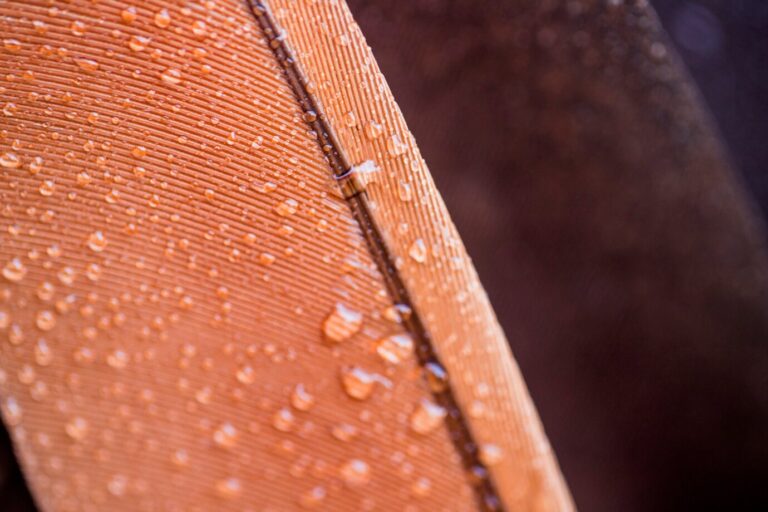In the ever-evolving workwear industry, biodegradable workwear innovations are quickly gaining attention as brands and manufacturers strive to meet the growing demand for sustainable, eco-conscious solutions. As industries across the globe continue to embrace green practices, biodegradable workwear is emerging as a game-changing trend in manufacturing. With a focus on reducing environmental impact, biodegradable materials are offering a revolutionary way to create high-performance garments that also leave a minimal ecological footprint. Let’s explore this trend in detail, highlighting how biodegradable workwear is reshaping the future of manufacturing and what it means for workers, businesses, and the planet.
1. Biodegradable Workwear: A Sustainable Revolution
Traditional workwear is often made from synthetic fibers that are non-biodegradable and take hundreds of years to break down in landfills. This leads to the accumulation of waste in the environment, contributing to the global pollution crisis. However, biodegradable workwear offers a more sustainable alternative, ensuring that once a garment reaches the end of its life, it won’t contribute to long-term environmental damage.
The latest biodegradable workwear innovations focus on using materials that naturally break down over time, such as organic cotton, hemp, and wool, which are all biodegradable and renewable. Additionally, manufacturers are experimenting with bio-based synthetic fibers and natural fibers that can be safely decomposed by microorganisms or composted.
By using biodegradable fabrics in the manufacturing process, brands are able to create workwear that meets the highest standards of durability and performance, while also aligning with the growing need for eco-friendly products. These sustainable garments represent an important shift toward more circular fashion, where the life cycle of the garment is considered from start to finish—minimizing waste and environmental impact.
2. Biodegradable Materials for High-Performance Workwear
When it comes to workwear, durability, functionality, and comfort are key. Workers need clothing that can withstand tough conditions—whether it’s on a construction site, in a warehouse, or in outdoor environments. That’s where biodegradable materials shine: they not only offer sustainability but also maintain high standards of performance.
For instance, hemp is becoming an increasingly popular material in biodegradable workwear. Known for its strength and abrasion resistance, hemp is ideal for garments like pants, jackets, and gloves, as it can endure the wear and tear of physically demanding jobs. Hemp also has natural properties like anti-bacterial and moisture-wicking, which help workers stay comfortable in challenging environments.
Another promising material is organic cotton, which is breathable and lightweight, making it ideal for workwear in hot, humid climates. Unlike conventional cotton, which often requires harmful chemicals, organic cotton is grown without pesticides or synthetic fertilizers, making it a safer, more eco-friendly option. It’s just as durable as regular cotton but decomposes naturally, leaving a minimal environmental footprint once discarded.
Even wool is finding its place in biodegradable workwear. Known for its natural insulation properties, moisture-wicking capabilities, and flame resistance, wool is a fantastic option for outdoor workers or those in colder climates. Wool is naturally biodegradable, renewable, and requires fewer resources to grow compared to synthetic fibers, making it a highly sustainable alternative for workwear.
3. Innovative Biodegradable Polymers and Bio-Fabrics
One of the most exciting developments in biodegradable workwear is the use of bio-based synthetic fibers and biodegradable polymers. These materials are designed to offer the same durability and performance as traditional synthetics but with a much smaller environmental impact.
Manufacturers are now creating bio-fabrics from renewable plant sources such as corn, sugarcane, and algae. These materials can mimic the qualities of synthetic fibers like polyester and nylon but are biodegradable and decompose safely in natural environments. For example, bio-polyester made from plant-based sources offers the same strength, flexibility, and moisture resistance as traditional polyester but will break down much faster after disposal.
Additionally, biodegradable polymers are being used to produce innovative workwear features like coatings and water-resistant finishes. These polymers can be used in place of traditional chemical treatments, which are often harmful to the environment. By using biodegradable options, manufacturers are improving the sustainability of their products without sacrificing quality.
4. The Circular Economy and Workwear: Reducing Waste with Biodegradable Materials
One of the key benefits of biodegradable workwear is its alignment with the concept of the circular economy. In a circular economy, products are designed for reuse, recycling, or biodegradation to reduce waste and promote sustainability.
As more brands turn to biodegradable fabrics, workwear companies are developing take-back programs where old uniforms can be returned, composted, or recycled. This means that worn-out biodegradable workwear will decompose naturally, leaving no harmful residue behind. In addition, many workwear manufacturers are working to make the entire production process more sustainable by utilizing closed-loop manufacturing systems, which reduce waste at every stage—from raw material sourcing to the end of the garment’s life cycle.
With a focus on biodegradability, the workwear industry is taking significant strides toward reducing the landfill waste that comes from discarded clothing. This aligns with broader sustainability goals and offers an opportunity for brands to improve their green credentials while meeting the increasing demand for eco-friendly products.
5. Customizable and Biodegradable Workwear: Sustainable Meets Stylish
Today’s workers aren’t just looking for functionality—they also want personalized, stylish, and comfortable clothing that reflects their identity and meets the demands of their profession. The biodegradable workwear trend is not only about sustainability but also about offering customizable designs that align with worker preferences.
By combining biodegradable fabrics with customization options, manufacturers can offer workers a wide range of choices in color, fit, and design. Whether it’s adding a company logo or incorporating ergonomic features, biodegradable workwear can be tailored to meet both practical and personal needs.
The beauty of this is that all these personalized options can be made from materials that won’t harm the planet when they reach the end of their lifecycle. As businesses shift to more sustainable production processes, offering eco-friendly and customizable workwear becomes an attractive option for consumers and companies alike.
6. Global Impact: Biodegradable Workwear on the Rise Worldwide
The demand for biodegradable workwear is growing worldwide, from North America to Europe and beyond. As more companies make the shift toward eco-friendly manufacturing, biodegradable materials are becoming a key component in their product offerings. This is particularly evident in industries where workers face the most challenging conditions, such as construction, mining, and manufacturing, where the need for durable and sustainable workwear is critical.
Countries with strong environmental regulations and sustainability goals are at the forefront of this shift. For example, European countries are leading the way in adopting eco-friendly workwear solutions, with Germany, Sweden, and the Netherlands pushing for stricter sustainability practices in clothing production. These regions are seeing an uptick in demand for biodegradable workwear, which is meeting both regulatory requirements and growing consumer expectations for environmentally responsible products.
Conclusion: Leading the Change with Biodegradable Workwear
The future of the workwear industry is shifting toward a more sustainable and biodegradable model, where eco-friendly materials meet the durability and performance needed for demanding work environments. With innovations in biodegradable fabrics, bio-based polymers, and natural fibers like hemp, organic cotton, and wool, the workwear industry is poised to make a significant impact on both workers’ comfort and the environment.






